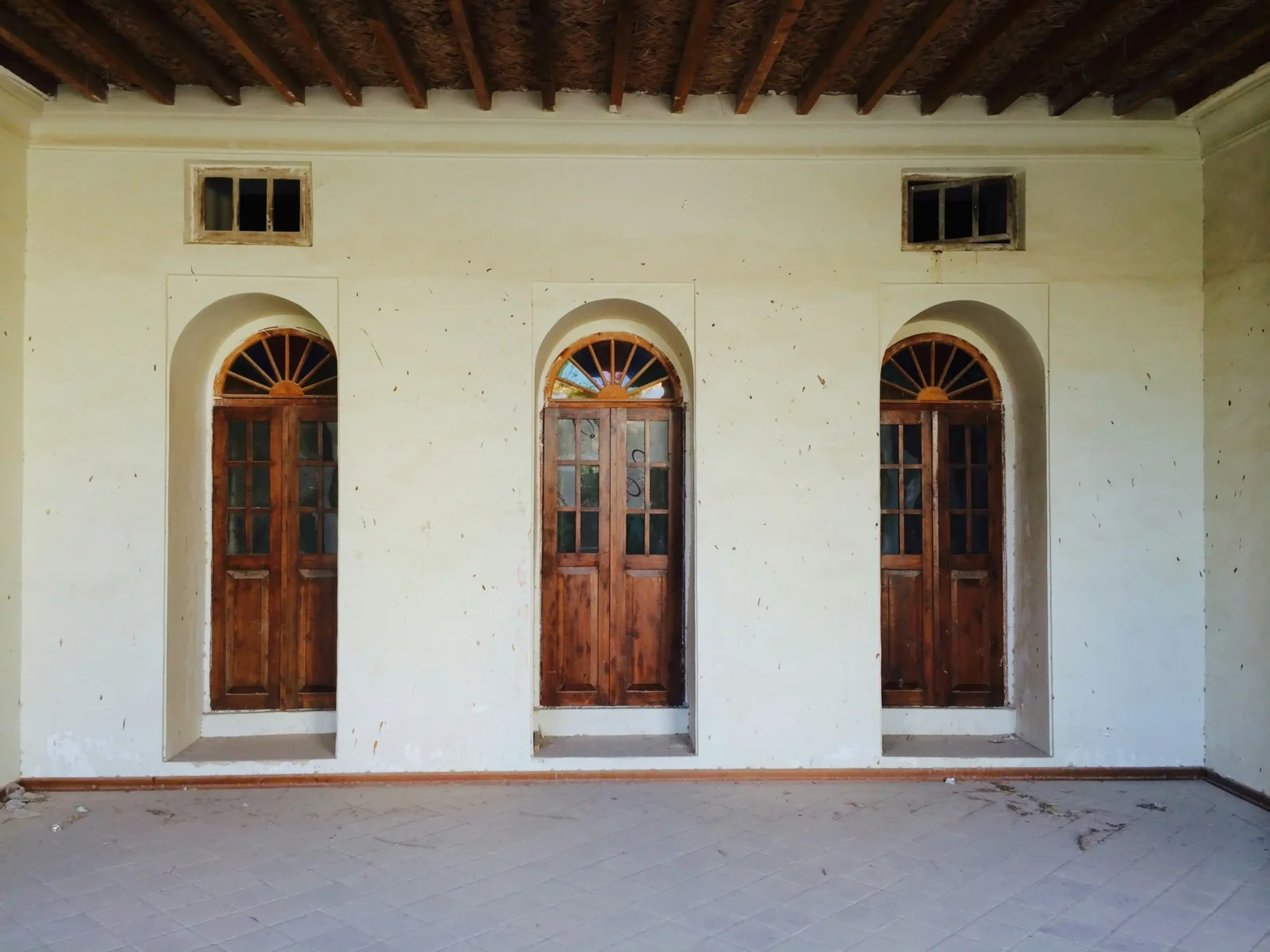- Home
- Articles
- Architectural Portfolio
- Architectral Presentation
- Inspirational Stories
- Architecture News
- Visualization
- BIM Industry
- Facade Design
- Parametric Design
- Career
- Landscape Architecture
- Construction
- Artificial Intelligence
- Sketching
- Design Softwares
- Diagrams
- Writing
- Architectural Tips
- Sustainability
- Courses
- Concept
- Technology
- History & Heritage
- Future of Architecture
- Guides & How-To
- Art & Culture
- Projects
- Interior Design
- Competitions
- Jobs
- Store
- Tools
- More
- Home
- Articles
- Architectural Portfolio
- Architectral Presentation
- Inspirational Stories
- Architecture News
- Visualization
- BIM Industry
- Facade Design
- Parametric Design
- Career
- Landscape Architecture
- Construction
- Artificial Intelligence
- Sketching
- Design Softwares
- Diagrams
- Writing
- Architectural Tips
- Sustainability
- Courses
- Concept
- Technology
- History & Heritage
- Future of Architecture
- Guides & How-To
- Art & Culture
- Projects
- Interior Design
- Competitions
- Jobs
- Store
- Tools
- More
Gas Station KPIs: Master Your Finances Beyond Fuel Sales

Table of Contents
ToggleCRE Investing Made Easy: Generate Passive Income from Existing Properties
I honestly still remember the feeling of closing my very first six-figure commercial real estate (CRE) deal. The sheer rush of finally getting it done, the excitement bubbling up, coupled with this deep, satisfying feeling in my gut… it was incredible. And what truly made it even sweeter, even more memorable? I didn’t have to build a single thing. Not a single blueprint was drawn, no construction crews were hired, and there were certainly no headaches involving permits or unforeseen delays. This particular deal, like many of my most successful ones, was entirely about recognizing a hidden opportunity where most others just saw a tired, perhaps underperforming asset. It was about knowing precisely how to unlock that asset’s dormant potential.
For a lot of folks, the phrase “commercial real estate investing” immediately conjures up mental images of sprawling, ambitious new developments, towering skyscrapers dominating city skylines, and incredibly complex construction projects.
Why Invest in Existing CRE?
Let’s talk about why focusing on properties that are already there simply makes so much sense.
The Advantages of Existing Properties
Honestly, just thinking about the inherent headaches of new construction – those inevitable delays, the almost guaranteed cost overruns, and the constant uncertainty surrounding a brand-new, unproven project – should be enough to make many investors pause. Investing in existing commercial real estate, on the other hand, offers a genuine multitude of advantages, with reduced risk being right at the top of the list. You’re simply not betting your capital on future projections or unproven concepts; instead, you’re investing in a tangible property that already has an established track record, a history of existing tenants, and verifiable, existing cash flow. This inherent stability significantly lowers your overall risk profile, thereby allowing for much more predictable returns on your investment.
Another particularly significant advantage of focusing on existing properties is the potential for far faster returns on your investment. Unlike brand-new developments that can often take years, sometimes many years, just to get off the ground and begin to generate any income, existing properties are already, by their very nature, generating revenue from day one. You can effectively start collecting rent checks almost immediately, allowing you to recoup your initial investment much quicker and begin building wealth sooner than if you had tied up capital in something still on the drawing board.

Different Property Types
The universe of commercial real estate is vast and incredibly diverse, encompassing a wide spectrum of property types. Each one possesses its own unique set of characteristics, presents distinct opportunities, and, naturally, comes with its own specific challenges. Grasping these nuances and understanding what makes each type special is absolutely crucial for making truly informed investment decisions. Generally, though, when we talk about CRE, we’re considering industrial, office, retail, and multifamily properties. The term “commercial” is often used broadly, so it’s good to be specific.
Industrial properties, which encompass everything from large warehouses to specialized distribution centers, are increasingly driven by the relentless growth of e-commerce and the complex world of global supply chain logistics. These types of properties can often offer very long-term leases and remarkably stable income streams, but it’s important to remember they can also be susceptible to broader economic downturns and fundamental shifts in industrial trends. Office buildings, on the other hand, primarily cater to businesses and professionals, providing the necessary space for administrative functions and operational activities.
Strategies for Profiting from Existing CRE (No Shovel Required)
Let’s get into the practical ways you can start generating income.
Value-Add Investing
Value-add investing is, without a doubt, my personal favorite strategy when it comes to generating truly significant returns from existing commercial real estate. The entire premise revolves around meticulously identifying properties that are currently underperforming or are clearly undervalued. This underperformance might be due to a history of poor management, significant deferred maintenance that has accumulated over time, or simply an outdated design that no longer appeals to modern tenants. Once identified, the strategy involves implementing strategic, targeted improvements designed to substantially increase both the property’s intrinsic value and its overall cash flow. This can range from relatively straightforward cosmetic upgrades like renovating common areas, modernizing individual tenant spaces, or significantly improving the property’s curb appeal, to implementing more efficient, professional management practices that reduce operating costs. The overarching goal is to effectively “force appreciation” by judiciously increasing the property’s Net Operating Income (NOI), which in turn directly boosts its overall market value.
Core-Plus Investing
Core-plus investing offers a distinctly more conservative approach to profiting from existing commercial real estate, specifically designed for those who prefer to keep their hands much cleaner and avoid any “dirt under their fingernails.” This strategy fundamentally involves acquiring already stabilized properties that typically boast strong occupancy rates and have a proven track record of reliable, consistent cash flow. The intent, once acquired, is to implement only minor, often low-cost improvements or operational efficiencies designed to further enhance their returns. These types of properties are usually located in established, desirable markets and typically demand minimal active management, making them an ideal option for investors who are primarily seeking relatively passive income streams with lower hands-on involvement.
REITs and Crowdfunding
For investors who are genuinely seeking an almost completely passive approach to CRE investing, Real Estate Investment Trusts (REITs) and commercial real estate crowdfunding platforms offer incredibly compelling and accessible options. REITs are essentially companies that own, and often operate, a diverse portfolio of income-producing real estate. They allow investors to purchase shares in these companies, much like buying stocks on the public market, and subsequently earn regular dividends based on the performance of the underlying properties held by the REIT. CRE crowdfunding platforms, on the other hand, provide a more direct, yet still relatively passive, way for multiple investors to pool their capital together and collectively invest in fractional shares of individual commercial real estate projects. These platforms typically feature much lower minimum investment amounts compared to direct, traditional CRE property acquisitions, making them accessible to a wider range of investors.
Wholesaling Commercial Properties
Wholesaling commercial properties presents a truly unique and often surprisingly effective pathway to profit from CRE without ever actually taking ownership of a property – not even for a day. As a wholesaler, your role is essentially that of a middleman or a connector. You actively identify undervalued properties that have clear potential, then you negotiate a purchase agreement directly with the seller. However, instead of closing on the property yourself, you then assign that contract, for a fee, to another investor who is looking to acquire the property. You are, in essence, flipping the contract itself, not the physical property. This strategy often requires minimal capital upfront and can generate quick profits, making it an incredibly attractive option for individuals with limited financial resources but strong networking and negotiation skills.
Case Studies: Real-World Examples of Successful CRE Investments
Let’s bring some of these strategies to life with actual scenarios.
Value-Add Office Building Turnaround
One notable project involved a five-story office building I acquired in a central business district. It was only about 60% occupied, had terribly outdated interiors, very inefficient HVAC systems, and frankly, a general lack of curb appeal. The very first thing I commissioned was a modern façade redesign. By doing something as seemingly simple as installing clean, modern aesthetic elements, the building immediately started to generate more interest and foot traffic. Following that, I strategically invested in significant energy-efficient upgrades throughout the building and executed a major renovation of all the common areas, which included creating a modern, shared workspace area that appealed to smaller, flexible tenants. The existing tenants seemed to genuinely appreciate the upgrades, which helped with retention.

The real key to this success was consciously creating a truly desirable and highly functional environment for a diverse range of tenants. I introduced flexible lease terms to attract startups, offered competitive rental rates, and provided a suite of modern amenities, including high-speed internet, well-equipped conference rooms, and convenient on-site management and security. Through these efforts, I successfully secured several new leases, ultimately increasing the building’s occupancy to an impressive 95% within a quick 18-month timeframe.
Core-Plus Retail Center Investment
Another project involved a core-plus investment, this time in a busy retail center. The center was excellently located in a high-traffic area boasting strong demographic indicators, but its anchor tenant, an older supermarket, was continually struggling, pulling down the overall vibrancy. While the total traffic to the center was satisfactory, the revenue generated by that anchor was noticeably very low. This presented a clear opportunity for fresh strategic thinking to turn things around.
My approach here was focused on a key strategic move: I negotiated a deal with a vibrant regional specialty grocer to replace the struggling supermarket. This single change significantly boosted the overall foot traffic to the center and generated renewed, positive interest throughout the entire property. Simultaneously, I implemented a proactive leasing strategy, meticulously targeting desirable, complementary tenants that would enhance the appeal of the new anchor. This often meant actively courting smaller, thriving local businesses that were just starting to gain popularity in the community, creating a much stronger and more appealing overall retail mix for the entire center.
Profiting Through CRE Wholesaling
I’m really not afraid of a quick flip, if the right opportunity presents itself. I look at it this way: if someone doesn’t want to put in the time and significant effort required to market and sell their property, I’m quite happy to step in and help facilitate a seamless transfer of the contract to someone who does. I’ve had a lot of experience wholesaling apartment buildings in my local area, and one particular transaction I closed came about purely from an unsolicited phone call.
The older gentleman I spoke with on the phone explained he was looking to retire very quickly. He needed to sell his apartment buildings, and he needed them sold fast, preferably in a single transaction. As it happened, I was actively looking for a new wholesale opportunity, and after a brief conversation, we very quickly came to a mutually agreeable purchase agreement. What truly convinced him, I believe, was my demonstrable expertise in that particular type of business and my established track record of performing precisely as promised.
Managing Risk and Due Diligence
No matter the strategy, managing risk is key, and that always begins with thorough due diligence.

Assessing Property Condition and Potential
Before you dive headfirst into any commercial real estate investment, it is absolutely crucial to conduct a comprehensive and utterly thorough assessment of the property’s physical condition and its underlying potential. This involves a multi-layered approach, typically including commissioning a detailed building inspection by a qualified professional, reviewing environmental reports to check for hidden contaminants, conducting a careful review of the local area and its zoning, as well as undertaking various other research tasks. All of this diligent effort is designed to proactively mitigate potential risks and uncover any unpleasant surprises before you commit your capital.
I recall a specific potential retail deal that, on paper, looked incredibly attractive. It had all the right numbers and an appealing location. One day, I decided to order a comprehensive environmental assessment, a step that thankfully became routine for me. What that assessment revealed was, frankly, devastating. The previous owner, it turned out, had engaged in some highly illegal activities, specifically attempting to bury chemical waste on the lot, from their illicit waste hauling company. The current owner, knowing this, was desperately trying to offload the problem quickly. By finding out this critical information before purchase, I was able to save hundreds of thousands, if not millions, of dollars in what would have been cleanup costs and legal liabilities down the road.
Financial and Market Analysis
Beyond just the physical condition of the property, a deep, meticulous dive into its financial performance and the dynamics of the surrounding market is truly essential for making genuinely informed decisions. This involves a rigorous financial analysis—meticulously reviewing rent rolls, scrutinizing historical operating expenses, and projecting future cash flows. It also extends to thorough market research of the local area, which might include investigating new construction projects that could introduce competition, understanding pertinent local laws and regulations that could impact the property, and analyzing broader market trends that could affect demand or values.
I always perform and recommend a very thorough financial review. What the building looks like “on paper” can sometimes tell a completely different story than its physical appearance might suggest. One particular deal vividly springs to mind when I think about this. I was working with an apartment complex that, physically, looked absolutely incredible – great bones, solid construction, and fantastic curb appeal. And on paper, it showed great current revenue figures.

Legal and Contractual Considerations
Navigating the often complex legal intricacies of commercial real estate transactions fundamentally requires the expert guidance of experienced professionals and a meticuolous, line-by-line review of all relevant legal documents. Partnering with a skilled real estate attorney who specializes specifically in commercial real estate transactions is absolutely crucial. They are your shield, ensuring that your interests are thoroughly protected and that you are fully aware of all potential legal risks and obligations before you proceed. It’s also paramount to carefully review all purchase agreements, lease agreements, and any other contracts to ensure they accurately reflect the agreed terms of the deal and that they are legally sound and enforceable.
Recap of Key Takeaways
Profiting from commercial real estate certainly does not require you to don a hard hat and oversee complex construction projects. As we’ve thoroughly explored, a multitude of lucrative opportunities quite clearly exist to generate substantial passive income and diligently build long-term wealth simply by strategically investing in existing properties. The core key lies in gaining a solid understanding of the various investment strategies available, mastering the art of thorough due diligence, and effectively managing the inherent risks. Whether you choose to pursue value-add plays, engage in core-plus acquisitions, invest passively through REITs, utilize crowdfunding platforms, or even successfully wholesale commercial properties, the path to CRE success is fundamentally paved with knowledge, meticulous planning, and a genuine willingness to continuously learn and adapt.
I’ve shared some real-world stories of successes, like the full revitalization of an underperforming office building through strategic renovations and targeted tenant improvements, and the critical role financial diligence plays in helping circumvent potential fraud and unforeseen risks in the complex real estate world. I’ve also touched upon less active but still highly lucrative endeavors, such as efficiently flipping contracts. The information and the methods are truly out there for those willing to seek them.
Submit your architectural projects
Follow these steps for submission your project. Submission FormLatest Posts
How Modern Bridges Balance Aesthetics and Engineering
How modern bridges balance aesthetics and engineering: explore form-driven systems, case studies,...
Exterior & Interior Remodeling Tips Every Homeowner Should Consider
Home upgrades reshape comfort, improve function, and strengthen long-term property value. Whether...
Top 8 Luxury Vacation Rentals Features Guests Love Most
A luxury vacation rental offers an entirely different experience than a typical...
Why Local Expertise Matters: Choosing the Right Plumbers in Townsville
Why Local Expertise Matters: Choosing the Right Plumbers in Townsville When it...












Leave a comment